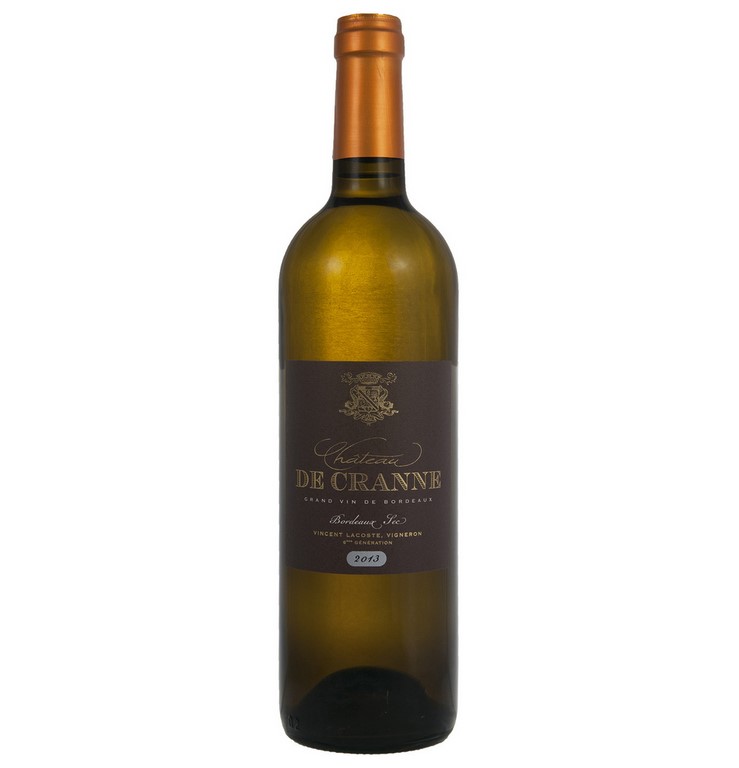Château de Cranne

The story of the Chateau de Cranne vineyard starts in 1833 when Jean Villars bought the vines.
Vincent Lacoste is the 6th generation of winemaker in his family even if younger, he was not interested by wine making. It is through his studies in agriculture that he takes interest in perpetrating the familial legacy, the wine making that was going on for 5 generations. When he was studying in the Anjou area, Vincent takes interest in the local wine producers involved in organic farming, and then in January 2010 he decides to start a transition for his vineyard toward organic farming.
The wine quality of the Chateau de Cranne is directly links to the terroir: the geographical area, the soil type and the climatic conditions.
About Côtes-de-Bordeaux

Côtes-de-Bordeaux is the youngest AOC appellation in Bordeaux. It was created in 2009, when the INAO declared the merging of four, previously recognized communes, Côtes de Blaye, Côtes de Bordeaux, Côtes de Castillon and Côtes de Francs. The following changes took place for wines labeled Côtes-de-Bordeaux starting with the 2009 vintage. Wines from Côtes de Castillon became Castillon Côtes de Bordeaux, Côtes de Francs became Francs Côtes de Bordeaux, Premieres Côtes de Blaye became Blaye Côtes de Bordeaux and Premieres Côtes de Bordeaux Rouge became Cadillac Côtes de Bordeaux.
While the Côtes-de-Bordeaux appellation was officially created in 2009, the genesis of the idea was planted in 1985 when the separate, but distinctive regions banded together to create the Association de Cotes-de-Bordeaux. The named eventually changed to Les Cinq Côtes de Bordeaux, to include additional appellations. Things started coming together by 2003, and in 2009, the new Cotes de Bordeaux appellation was created with the purpose of helping to promote the wines from the previously separate appellations as a united group.
The specific areas were chosen because they shared similar terroirs of gravel, clay and limestone soils. Another consideration was the fact that the vast majority of the wines produced in those soils were dominated by the Merlot grape. One problem, or virtue, (pepending on your point of view) found in the new appellation is the ability for producers from any terroir in the now very large Cotes-de-Bordeaux appellation to incorporate grapes from any of the previously, separate appellations; Côtes de Castillon, Côtes de Blaye, Côtes de Bordeaux and Côtes de Francs into their wine.
Information source : www.bordeaux-cotes.com
Credit map : www.vins-bordeaux-courtiers.com
As always, I have been in contact with Vincent through a mutual friend. I wanted to work with a vineyard producing some Côtes de Bordeaux. I think this is where we can find the best value in that vast region. We met, discussed and tasted his wines and decided to work together.



